Four-Temple Circuit
About the Four-Temple Circuit
The four-temple circuit is a pilgrimage to the temples affiliated with
Basho and Ennin (Motsuji Temple, Chusonji Temple, Yama-dera, and Zuiganji Temple).
If you collect the goshuin (seal stamps) of Motsuji Temple and Chusonji Temple in Hiraizumi,
Zuiganji Temple in Matsushima, and Risshakuji Temple in Yama-dera in your stamp book,
the chief priest of the final temple you visit will provide an inscriptions in your goshuin book.
If the term of your vow expires at a different temple during your circuit, you will collect writings from all four temples.
Why not complete the four-temple circuit on a group tour with your family?
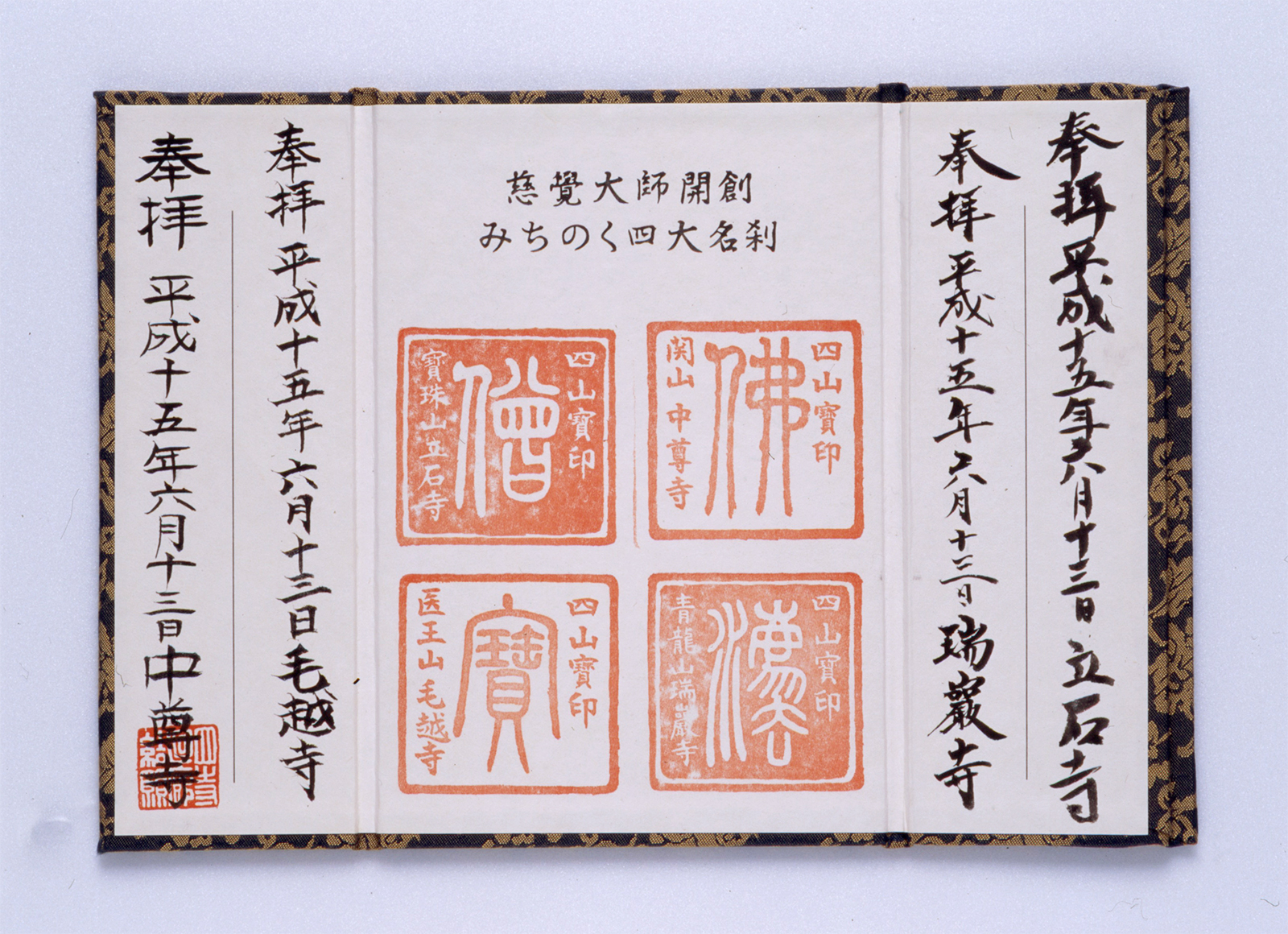
Q&A
Q1. Do the temples have to be visited in a certain order?
The order in which you visit the four temples does not matter. Start at whichever one you like.
Q2. Do I need to prepare anything?
Obtain a stamp book from the first temple you visit. It may be a good idea to bring a wagesa (Buddhist stole) and juzu (Buddhist prayer beads) with you as well. The juzu and wagesa may be ones you already own, or from your family's bodaiji.
Introduction to the Four Temples
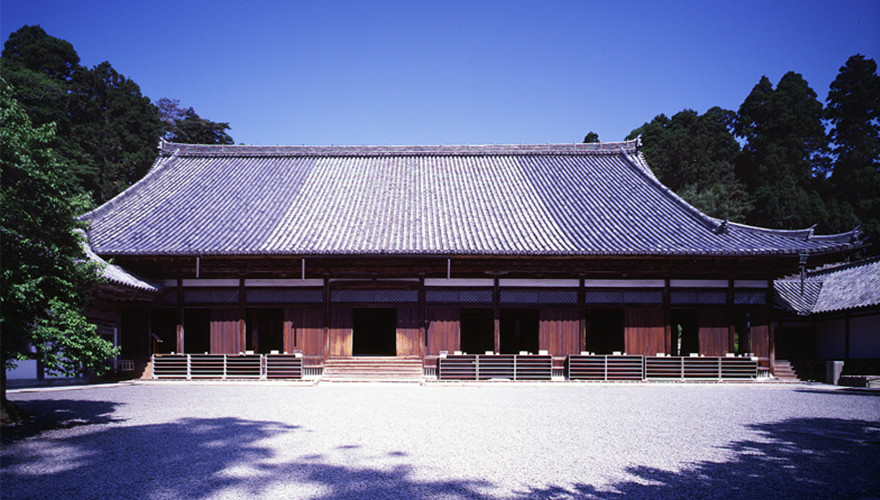 Zuiganji Temple, MatsushimaOriginally founded in 828 by Jikaku Daishi, Hojo Tokiyori rebuilt the temple as a Zen sanctuary during the Kamakura period (1185–1333), at which point it became affiliated with the Rinzai school. At the end of the Sengoku period (1467–1603), the temple was converted to a Myoshinji temple. The current structure was completed by Date Masamune in 1609 after 5 years of labor. Magnificent materials, carvings, and partition paintings have earned Zuiganji Temple two national treasure designations and three important cultural property designations within the framework of the Momoyama art style. This is the northernmost Rinzai Zen training monastery.
Zuiganji Temple, MatsushimaOriginally founded in 828 by Jikaku Daishi, Hojo Tokiyori rebuilt the temple as a Zen sanctuary during the Kamakura period (1185–1333), at which point it became affiliated with the Rinzai school. At the end of the Sengoku period (1467–1603), the temple was converted to a Myoshinji temple. The current structure was completed by Date Masamune in 1609 after 5 years of labor. Magnificent materials, carvings, and partition paintings have earned Zuiganji Temple two national treasure designations and three important cultural property designations within the framework of the Momoyama art style. This is the northernmost Rinzai Zen training monastery.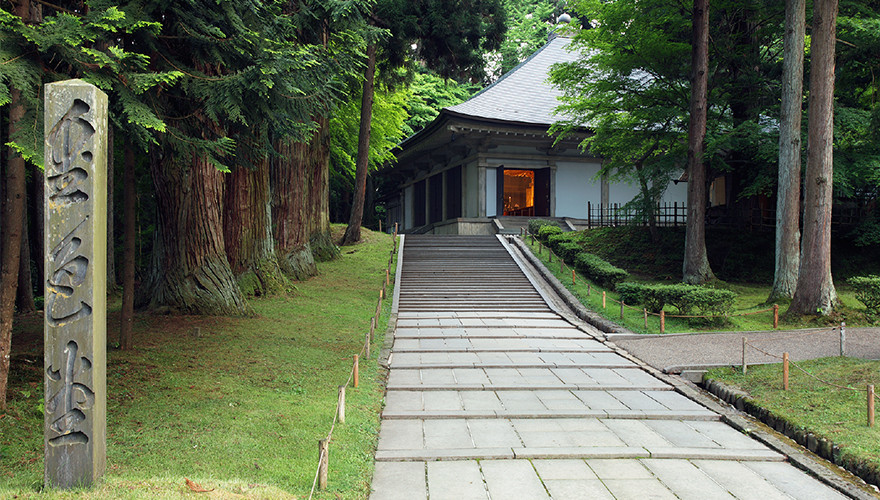 Chusonji Temple, HiraizumiKiyohira, the first Oshu Fujiwara lord, began the construction of a massive temple complex of halls and pagodas here at the beginning of the 12th century, including a two-story pagoda and two-story great hall. The purpose of the construction was to establish a pure land to console the souls of those who had died during the Former Nine Years War and the Later Three-Year War. Although many of the halls and pagodas were lost in a fire in the 14th century, Chusonji Temple is a treasure trove of Heian period art, containing a total of nearly 3,000 pieces, including the Konjikido Golden Hall.
Chusonji Temple, HiraizumiKiyohira, the first Oshu Fujiwara lord, began the construction of a massive temple complex of halls and pagodas here at the beginning of the 12th century, including a two-story pagoda and two-story great hall. The purpose of the construction was to establish a pure land to console the souls of those who had died during the Former Nine Years War and the Later Three-Year War. Although many of the halls and pagodas were lost in a fire in the 14th century, Chusonji Temple is a treasure trove of Heian period art, containing a total of nearly 3,000 pieces, including the Konjikido Golden Hall.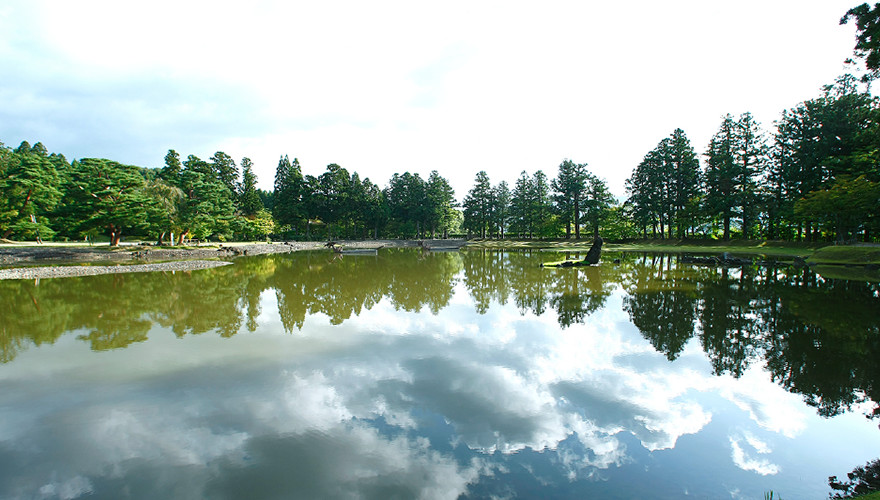 Motsuji Temple, HiraizumiLavish temple buildings, including Kondo Enryuji and Kashoji, were constructed by Motohira, of the second generation of the Fujiwara clan, and Hidehira, of the third generation of the Fujiwara clan at the end of the Heian period (794–1185). Its scale grew to 40 halls and pagodas and 500 priests' temple quarters, eventually becoming referred to as the greatest sacred grounds in all of Japan. Although the original temple buildings were lost in a fire, the current Pure Land Buddhist Garden and Heian period remains have been retained in a nearly complete state, and the temple has been a designated both a special historic site and special place of scenic beauty.
Motsuji Temple, HiraizumiLavish temple buildings, including Kondo Enryuji and Kashoji, were constructed by Motohira, of the second generation of the Fujiwara clan, and Hidehira, of the third generation of the Fujiwara clan at the end of the Heian period (794–1185). Its scale grew to 40 halls and pagodas and 500 priests' temple quarters, eventually becoming referred to as the greatest sacred grounds in all of Japan. Although the original temple buildings were lost in a fire, the current Pure Land Buddhist Garden and Heian period remains have been retained in a nearly complete state, and the temple has been a designated both a special historic site and special place of scenic beauty.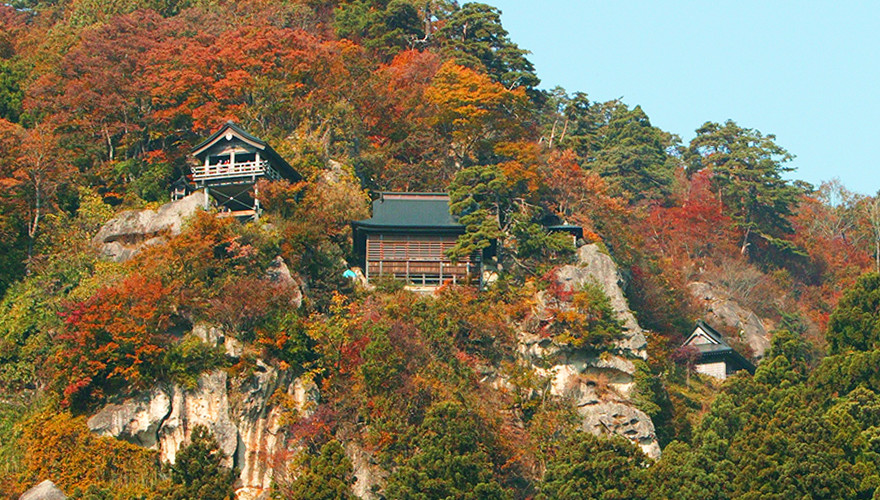 Risshakuji Temple, Yama-deraAfter reaching the top of the 1,000 stone steps surrounded by cedar trees and oddly-shaped rocks lying on top of one another, a world filled with quietude presents itself to you. You will come upon stone grave tablets and Buddhas as you climb, as well as a Sutra Hall and a hall commemorating the temple's founding. The view from the platformed Godaido Hall is particularly stunning. The poet Matsuo Basho visited Yama-dera and composed the famous haiku: "Ah, such quietude / Seeping into the boulders / Buzzing cicadas".
Risshakuji Temple, Yama-deraAfter reaching the top of the 1,000 stone steps surrounded by cedar trees and oddly-shaped rocks lying on top of one another, a world filled with quietude presents itself to you. You will come upon stone grave tablets and Buddhas as you climb, as well as a Sutra Hall and a hall commemorating the temple's founding. The view from the platformed Godaido Hall is particularly stunning. The poet Matsuo Basho visited Yama-dera and composed the famous haiku: "Ah, such quietude / Seeping into the boulders / Buzzing cicadas".